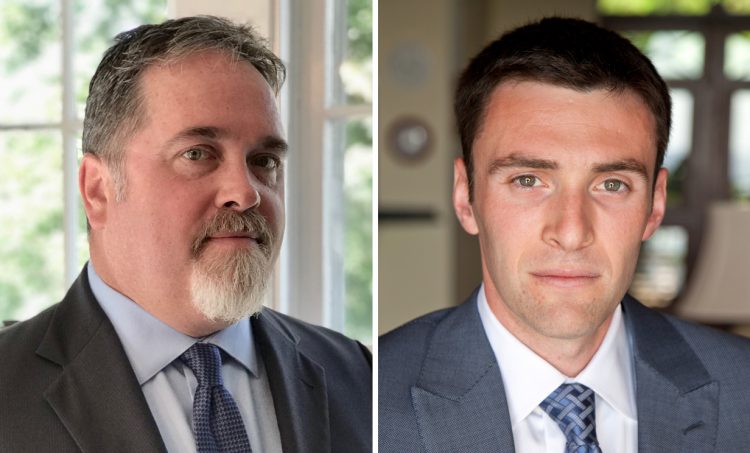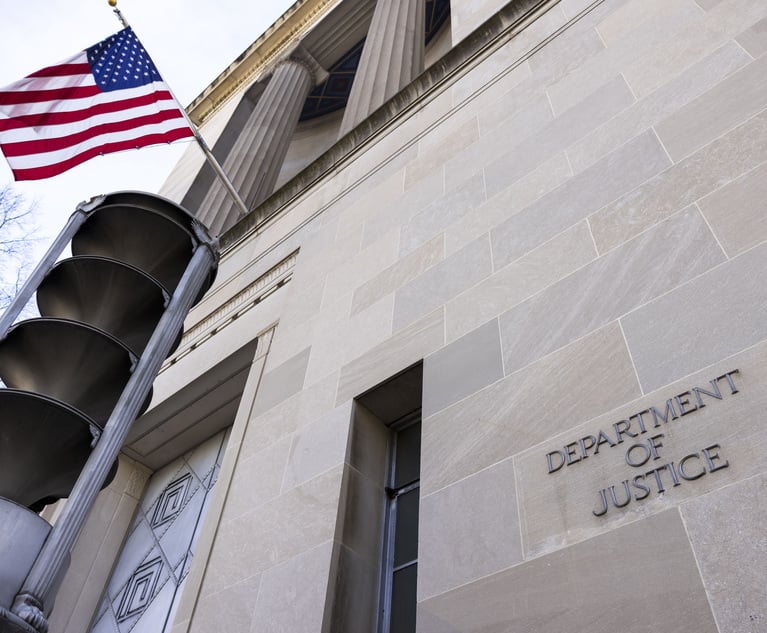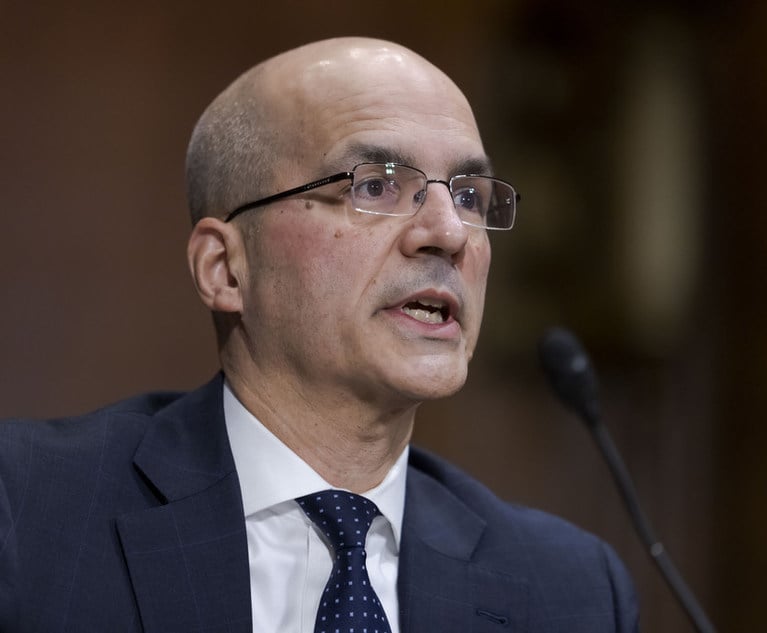What Really Happened in 'Carlos Rodriguez v. City of New York'?
'Rodriguez' does not represent a tectonic shift in summary judgment practice but is actually the next logical step in the drive towards achieving litigation efficiencies.
September 14, 2018 at 11:20 AM
9 minute read
 Timothy R. Capowski and Jonathan P. Shaub
Timothy R. Capowski and Jonathan P. Shaub
Most articles discussing the New York Court of Appeals' decision in Carlos Rodriguez v. City of New York, 31 N.Y.3d 312 (2018), present a view that travels well afield of what the Court actually considered, what the Court actually held, and what relief the Court actually afforded. In reality, the Court reached a 4-3 determination on a narrow point of law in a general negligence case and held that a plaintiff does not bear the burden of establishing the absence of their own comparative negligence in order to obtain summary judgment. It remanded for determination of whether or not an issue of fact was presented on the record as to either: (a) the defendant's negligence or (b) whether the defendant's negligence was a proximate cause of the plaintiff's injury. That is all.
All of the other longstanding rules still apply in order for a party to obtain or defend against summary judgment. The Court simply eliminated an extra hurdle applicable to plaintiffs and did not drastically change the legal landscape.
Overarching Context
Initially, the “new” rule in Rodriguez isn't even really that new. Rather, it is the culmination of an evolving view that the Court noted had already taken root in three of the four appellate departments. Indeed, the Rodriguez decision is more properly framed as a continuation of the growing trend favoring greater litigation efficiency. Our court system has been overburdened for years, leading courts and commentators to encourage the increase in the grant of partial summary judgment, CPLR 3212(e), and the utilization of the previously underused section, CPLR 3212(g) (deeming facts established for all purposes), to “salvag[e] something from [otherwise] abortive summary judgment motions.” CPLR 3212:1 Supplementary Practice Commentaries, John R. Higgitt (McKinney 2015). Each serves to assist in streamlining litigation. The Court in Rodriguez specifically emphasized this, pointing out that the “principal rationale of partial summary judgment is to narrow the number of issues presented to the jury”. At base then, Rodriguez does not represent a tectonic shift in summary judgment practice, but is actually the next logical step in the drive towards achieving litigation efficiencies.
What Didn't Happen in Rodriguez?
Rodriguez did not alter the framework for deciding a negligence claim or a Labor Law 241(6) claim and did not grant summary judgment to the plaintiff. Instead, it remanded for a determination as to whether there were issues of fact as to defendant's negligence and proximate causation. The Court did not suggest a new rule where plaintiff need merely establish a strong showing of negligence by defendant in order to obtain summary judgment. Indeed, the Court specifically recognized that a determination was necessary on both of the individual prongs of negligence and proximate cause.
The Court also did not suggest that comparative negligence was irrelevant in the determination of summary judgment. It merely held that the fact that an issue of fact existed as to plaintiff's comparative fault was, alone, an insufficient basis to deny summary judgment. This is a significant distinction. For example, if there exists an issue of fact as to whether plaintiff's negligence was the sole proximate cause of the injury, or as to which of multiple tortfeasors' (including plaintiff's) alleged negligence caused the injury, then this would obviously be a sufficient basis to deny summary judgment.
Contrary to what has been asserted, Rodriguez did not meaningfully impact the application of Labor Law 241(6). The Court did not hold that, “[f]ollowing Rodriguez, once the moving plaintiff has established that the defendant violated one of the Part 23 rules, the defendant must be held liable as a matter of law” (Litigants, the Bench and the Bar Stand to Gain from 'Rodriguez' Decision, John Zaremba and Dan Gluck, NYLJ (4/24/18)). Nothing could be further from the truth. Not only was Rodriguez a general negligence case, having little bearing on statutory Labor Law 241(6) causes of action, but the three-part test plaintiff must satisfy to establish entitlement to summary judgment on such a cause of action remains unchanged by the decision. See PJI 2:216A; Rizzuto v. L.A. Wenger Contracting Co., 91 N.Y.2d 343, 349 (1998); Belcastro v. Hewlett-Woodmere, 286 A.D.2d 744 (2d Dep't 2001). First, the jury must decide whether the defendant violated a specific and applicable Industrial code provision. Importantly, the violation of a code provision only “constitute[s] some evidence of negligence.” See Belcastro, supra at 746. Second, if a violation occurred, the jury must next determine “whether the equipment, operation or conduct at the worksite was reasonable and adequate under the particular circumstances”. Id. Thus, if the jury finds a violation it must still decide whether that violation constituted a failure to use reasonable care. Lastly, if the jury finds that there was a violation of a specific industrial code provision and that the violation constituted a failure to use reasonable care (i.e., defendant was negligent), only then does it determine whether such negligence was the proximate cause of the injury. See Rizzuto, supra; PJI 2:216A.
As none of the elements of this settled three-part test has been affected by Rodriguez, any alleged impact on the application of Labor Law 241(6) appears to be nominal at best.
Practical Implications of Rodriguez for the Bar
Rodriguez may have some impact on cases where a defendant's liability (negligence and causation) is a foregone conclusion and where the claim of plaintiff's comparative fault is exceedingly weak or pretextual. The standard example is where an injured plaintiff pedestrian is located in the crosswalk and the defendant driver runs a red light and testifies that he or she never saw the plaintiff pedestrian. Merely raising an issue of fact that the plaintiff was possibly texting or distracted while crossing the street will be insufficient for the defendant to avoid summary judgment on liability. Prior to Rodriguez, it would have been enough in some courts.
After Rodriguez, defendants can no longer rely on comparative fault as a crutch, and must instead undertake discovery with an eye toward the elements of plaintiff's claim and focus on developing evidence that can raise an issue of fact as to negligence and/or causation.
More Summary Judgment Motions?
In light of Rodriguez, it has been predicted that the courts will see an uptick in summary judgment motions. However, a prominent plaintiff attorney disagreed when we raised this with him and advised that Rodriguez really made no difference to him or other counsel in significant personal injury cases. Rather, they viewed the presentation of a weak liability defense as a damages verdict escalator, as it detracted from the credibility of defendant's entire case, and was more strategically valuable than the potential early commencement of prejudgment interest accrual.
Sauce For the Goose…
The trend towards efficiency embodied by Rodriguez should equally apply as between co-defendants, or even when a defendant seeks summary judgment against a plaintiff on the issue of comparative fault. If Rodriguez is properly understood as a beacon for bona fide issue determination and the promotion of litigation efficiency, then fringe defendants and deep-pocket, low-liability defendants will now consider moving for partial summary judgment against the primary tortfeasor or plaintiff. Fairly applying Rodriguez to these two instances, the opponent of summary judgment should not be able to avoid summary judgment by simply invoking a weak or pretextual issue of fact as to its adversary's shared or comparative fault. Hence, it will be interesting to watch and see if there is a resultant uptick in the making of such motions by defendants.
Sequence of Trial
There is a strategic counterbalance for both sides to consider in bifurcated cases. The grant of partial summary judgment in favor of a plaintiff on liability necessarily impacts the sequence of openings, trial and closing arguments at the following trial on liability apportionment where an issue of fact exists as to plaintiff's comparative fault. In such an instance, the defendant carries the burden of proof and will be entitled to open and present its case first and present its closing argument last. “It is the well-settled rule in this state that the party holding the affirmative upon an issue of fact has the right upon the trial to open and close the proof, and to reply in summing up the case to the jury.” Heilbronn v. Herzog, 165 N.Y. 98, 100-01 (1900).
Bifurcation
One writer suggests that, in light of Rodriguez, “sound practical reasons” exist supporting unification of trials, and supports this position with reference to certain “jurisdictions that already presumptively conduct unified trials” (“An Analysis of the Court of Appeal's Decision in 'Rodriguez v. City of New York,'” Joshua Kelner, NYLJ (4/1/18)).
However, the actual rule in New York is a presumption favoring bifurcated trials. Pursuant to 22 NYCRR § 202.42(a), “[j]udges are encouraged to order a bifurcated trial of the issues of liability and damages in any action for personal injury where it appears that bifurcation may assist in a clarification or simplification of issues and a fair and more expeditious resolution of the action.” See Carmody Wait 2d New York Practice with Forms § 52:17; see also PJI 1:2A; CPLR 603; CPLR 4011. This is the governing rule of practice applied throughout New York; trial courts in the Bronx and New York County have historically disregarded it in practice.
Accordingly, we suggest that the increased focus on litigation efficiency espoused by the Court in Rodriguez supports a change in the practice of these two counties. Bifurcation, a rule that undeniably favors efficiency, is one that should be adhered to in the wake of Rodriguez, not further disregarded.
Conclusion
Rodriguez has sparked a renewed interest in the strategic value of CPLR 3212. This is a positive development, as its value has been underestimated as an issue-sharpening and discovery tool. Under New York's antiquated system of trial by near-ambush, summary judgment is a critical discovery weapon and a prophylactic tool for locking down your adversary into his or her claims or defenses well before trial. More often than not, it equips you with your adversary's expert affidavit and otherwise serves as the first real and full exposition of the case for both sides to examine and assess the strengths and weaknesses of their positions and assist in realistic valuation and risk determination for purposes of potential settlement.
Timothy R. Capowski is a partner and Jonathan P. Shaub is an associate at Shaub, Ahmuty, Citrin & Spratt.
This content has been archived. It is available through our partners, LexisNexis® and Bloomberg Law.
To view this content, please continue to their sites.
Not a Lexis Subscriber?
Subscribe Now
Not a Bloomberg Law Subscriber?
Subscribe Now
NOT FOR REPRINT
© 2025 ALM Global, LLC, All Rights Reserved. Request academic re-use from www.copyright.com. All other uses, submit a request to [email protected]. For more information visit Asset & Logo Licensing.
You Might Like
View All
'A Shock to the System’: Some Government Attorneys Are Forced Out, While Others Weigh Job Options
7 minute read
'Serious Legal Errors'?: Rival League May Appeal Following Dismissal of Soccer Antitrust Case
6 minute read
How Some Elite Law Firms Are Growing Equity Partner Ranks Faster Than Others
4 minute read
Trending Stories
- 1States Accuse Trump of Thwarting Court's Funding Restoration Order
- 2Microsoft Becomes Latest Tech Company to Face Claims of Stealing Marketing Commissions From Influencers
- 3Coral Gables Attorney Busted for Stalking Lawyer
- 4Trump's DOJ Delays Releasing Jan. 6 FBI Agents List Under Consent Order
- 5Securities Report Says That 2024 Settlements Passed a Total of $5.2B
Who Got The Work
J. Brugh Lower of Gibbons has entered an appearance for industrial equipment supplier Devco Corporation in a pending trademark infringement lawsuit. The suit, accusing the defendant of selling knock-off Graco products, was filed Dec. 18 in New Jersey District Court by Rivkin Radler on behalf of Graco Inc. and Graco Minnesota. The case, assigned to U.S. District Judge Zahid N. Quraishi, is 3:24-cv-11294, Graco Inc. et al v. Devco Corporation.
Who Got The Work
Rebecca Maller-Stein and Kent A. Yalowitz of Arnold & Porter Kaye Scholer have entered their appearances for Hanaco Venture Capital and its executives, Lior Prosor and David Frankel, in a pending securities lawsuit. The action, filed on Dec. 24 in New York Southern District Court by Zell, Aron & Co. on behalf of Goldeneye Advisors, accuses the defendants of negligently and fraudulently managing the plaintiff's $1 million investment. The case, assigned to U.S. District Judge Vernon S. Broderick, is 1:24-cv-09918, Goldeneye Advisors, LLC v. Hanaco Venture Capital, Ltd. et al.
Who Got The Work
Attorneys from A&O Shearman has stepped in as defense counsel for Toronto-Dominion Bank and other defendants in a pending securities class action. The suit, filed Dec. 11 in New York Southern District Court by Bleichmar Fonti & Auld, accuses the defendants of concealing the bank's 'pervasive' deficiencies in regards to its compliance with the Bank Secrecy Act and the quality of its anti-money laundering controls. The case, assigned to U.S. District Judge Arun Subramanian, is 1:24-cv-09445, Gonzalez v. The Toronto-Dominion Bank et al.
Who Got The Work
Crown Castle International, a Pennsylvania company providing shared communications infrastructure, has turned to Luke D. Wolf of Gordon Rees Scully Mansukhani to fend off a pending breach-of-contract lawsuit. The court action, filed Nov. 25 in Michigan Eastern District Court by Hooper Hathaway PC on behalf of The Town Residences LLC, accuses Crown Castle of failing to transfer approximately $30,000 in utility payments from T-Mobile in breach of a roof-top lease and assignment agreement. The case, assigned to U.S. District Judge Susan K. Declercq, is 2:24-cv-13131, The Town Residences LLC v. T-Mobile US, Inc. et al.
Who Got The Work
Wilfred P. Coronato and Daniel M. Schwartz of McCarter & English have stepped in as defense counsel to Electrolux Home Products Inc. in a pending product liability lawsuit. The court action, filed Nov. 26 in New York Eastern District Court by Poulos Lopiccolo PC and Nagel Rice LLP on behalf of David Stern, alleges that the defendant's refrigerators’ drawers and shelving repeatedly break and fall apart within months after purchase. The case, assigned to U.S. District Judge Joan M. Azrack, is 2:24-cv-08204, Stern v. Electrolux Home Products, Inc.
Featured Firms
Law Offices of Gary Martin Hays & Associates, P.C.
(470) 294-1674
Law Offices of Mark E. Salomone
(857) 444-6468
Smith & Hassler
(713) 739-1250






